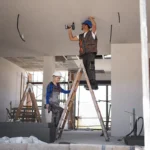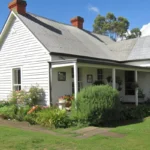Introduction
A granny flat is a small home built on the same land as your main house. Many Australian families choose this option for extra space. These mini homes help elderly parents stay close to family. They also create rental income for homeowners. Young adults use them as their first independent home. The building rules vary across different Australian states. Most granny flats need council approval before construction. They offer a smart way to use backyard space effectively.
What is a Granny Flat Australia
What is a granny flat australia? It’s a separate small dwelling on residential property. These structures connect to the main house utilities like water and power. Australian councils call them secondary dwellings or ancillary units. They must follow strict size limits set by local government. Most states allow up to 60 square meters of floor space. The flat needs proper kitchen and bathroom facilities. Windows and doors must meet safety building codes. These homes provide independent living while staying on family property.
How Big is a Granny Flat?
Australian granny flats typically measure between 40 to 60 square meters. This equals about 430 to 645 square feet of living space. The size includes one or two bedrooms with basic facilities.
How Do Granny Flats Compare to Other Small Living Spaces?
Granny flats offer more space than tiny houses but less than full apartments. They provide permanent housing solutions unlike temporary outdoor studios or portable buildings.
Granny Flats Vs Secondary Dwelling
Granny flats and secondary dwellings mean the same thing in Australia. Both terms describe additional homes on existing residential blocks. The naming depends on which state council you deal with. Victoria calls them secondary dwellings while NSW uses granny flat terminology. Both require development approval from local authorities. They follow identical building standards and size restrictions. The structures must remain separate from the main house. Both options increase property value and rental potential significantly.
Granny Flat Vs Tiny House
Tiny houses move on wheels while granny flats stay permanent. Building codes treat them very differently across Australia. Granny flats connect to existing utilities like electricity and water. Tiny houses need separate power sources and water tanks. Council approval is easier for granny flats than mobile tiny homes. Insurance costs less for permanent granny flat structures. Tiny houses face parking restrictions in many suburban areas. Granny flats offer better long-term investment returns for families.
Granny Flat Vs Outdoor Studio
Outdoor studios work as offices or hobby spaces only. They cannot include full kitchen or bathroom facilities legally. Granny flats provide complete independent living arrangements. Studios cost less but offer limited functionality for residents. Building permits differ significantly between these two options. Granny flats need stricter safety features like fire exits. Studios work well for creative work but not housing. Family members cannot live permanently in basic outdoor studios.
4 Important Aspects to Consider When Building a Granny Flat in Your Backyard
Access
Your granny flat needs safe walking paths from the street. Emergency vehicles must reach the building during crisis situations. Install proper lighting along all pathways for night safety. Consider wheelchair access if elderly family members will live there. Separate entrance doors provide privacy for both households. Wide gates allow furniture delivery and moving trucks access.
Parking
Check council rules about extra parking spaces required. Most areas demand one additional car space per granny flat. Position parking away from main house windows for noise control. Consider future needs if multiple cars use the property. Some councils allow tandem parking behind existing driveways. Street parking may not count toward official requirements.
Privacy
Build fences or plant hedges between the two homes. Position windows away from main house living areas. Different entrance locations prevent awkward daily encounters. Sound insulation helps reduce noise transfer between buildings. Separate outdoor spaces give each household private areas. Consider curtains or blinds for all windows facing neighbors.
Landscaping
Plan gardens that complement both buildings on the property. Drainage systems must handle extra roof water runoff safely. Choose plants that won’t grow into building foundations. Create separate outdoor entertainment areas for each dwelling. Consider maintenance access for both buildings when planting. Screen utilities like air conditioning units with attractive plants.
Why NASH Homes is the Best Option to Build Granny Flats
NASH Homes specializes in Australian granny flat construction projects. Their team understands local council requirements across different states. They handle all permit applications and building approvals efficiently. Quality materials ensure structures last for many decades ahead. Fixed pricing prevents surprise costs during construction phases. Professional builders complete projects within promised timeframes consistently. After-sales support helps with any maintenance issues later.
Conclusion
What is a granny flat australia becomes clear when you see the benefits. These structures solve housing problems for growing Australian families. They provide rental income while keeping loved ones nearby. Smart design maximizes small spaces for comfortable independent living. Professional builders like NASH Homes make the process simple. Council approvals become easier with experienced construction teams. Granny flats represent practical solutions for modern Australian housing challenges. They add lasting value to residential properties nationwide.




